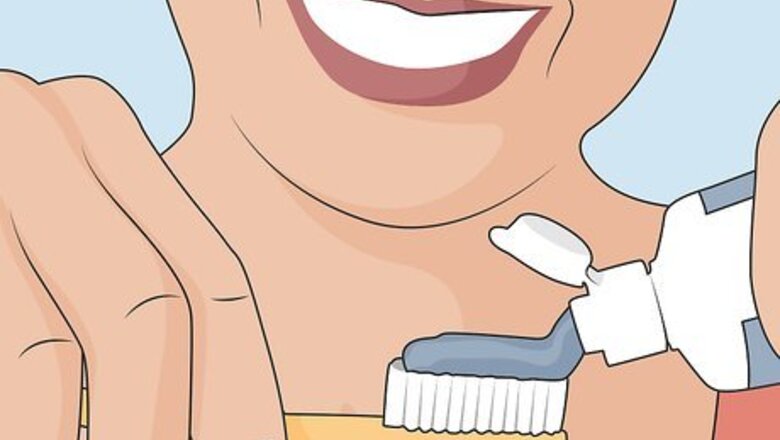
views
Good Oral Hygiene

Brush your teeth twice a day with fluoride toothpaste. Brushing is the best way to support your oral health. Use an ADA-approved fluoride toothpaste and brush your teeth 2-3 times per day for the best results. If you’d like to use a natural toothpaste, look for brands like Tom’s, Burt’s Bees, and Jason. Make sure to check for the ADA seal of approval. Also get a type that contains fluoride, because natural brands usually produce fluoride and fluoride-free products. Don’t brush your teeth more than 3 times per day. While you might think more brushing is good for fighting tooth decay, brushing too much actually damages your enamel.
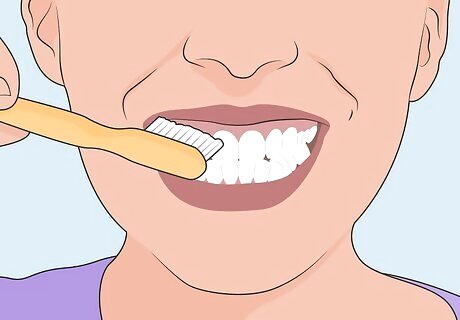
Use a light touch when you brush your teeth. You might be tempted to brush very hard to get rid of tooth decay, but this is actually harmful. Pressing too hard grinds away enamel, so use gentle, circular motions to clean your teeth. It’s also best to use a soft-bristled toothbrush to avoid damaging your teeth.
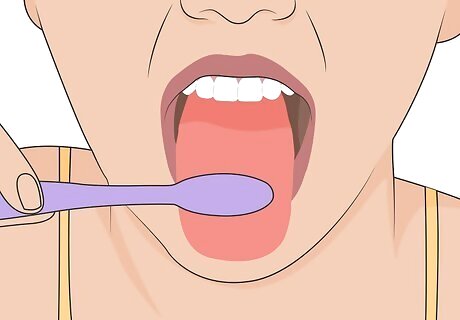
Clean your tongue as well. Lots of bacteria live on your tongue, so if you miss this spot, it’ll re-infect your mouth once you’re done brushing. Scrub the top of your tongue with gentle, circular motions to dislodge any plaque or bacteria there. Try to brush towards the front of your mouth so it's easier to spit.
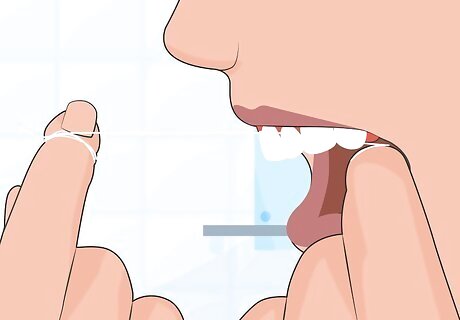
Floss once a day to remove food stuck between your teeth. Brushing alone doesn’t remove all the food from your mouth, so make sure you floss once a day to get rid of any trapped food. If your gums are slightly inflamed, you might notice a bit of bleeding after you floss. This is normal. Just swish some water around your mouth and spit it out.
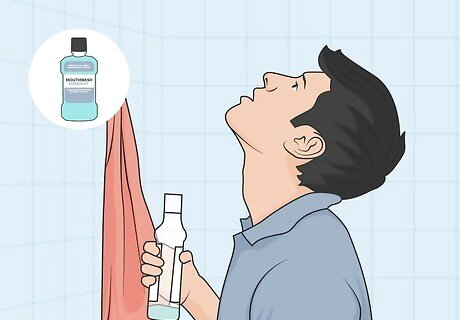
Rinse your mouth with an ADA-approved fluoride mouthwash after brushing. This is an extra step to make sure your mouth is free of bacteria. Swish around some mouthwash after brushing for 30-60 seconds and then spit it out. Try to focus on the decayed spots. Make sure you spit out all of the mouthwash. You also shouldn’t give mouthwash to children younger than 7 because they might swallow some of it.
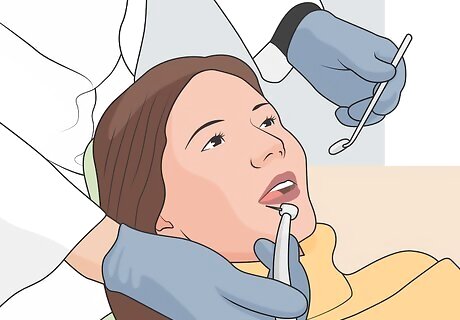
Visit your dentist for regular checkups and cleanings. Even if you always clean your teeth thoroughly, some plaque could still build up on your teeth and cause decay. A good cleaning every 6 months can prevent any permanent tooth decay. Dentists can also spot early signs of tooth decay that you might have missed and take steps to reverse it before a cavity forms.
Dietary and Lifestyle Care Tips
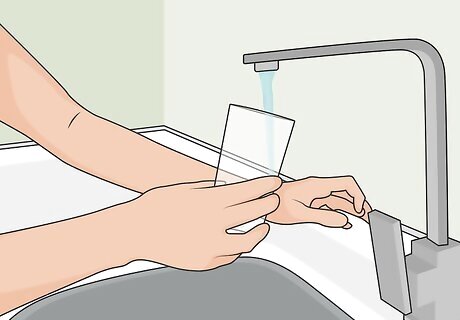
Drink fluoride-infused tap water. Staying hydrated keeps your saliva flowing and washes your teeth. Drink tap water with fluoride for extra protection. In most developed countries, all tap water is infused with some fluoride. However, well water and bottled water isn't, so you'll need to make sure you keep your teeth especially clean if these are your main water sources. It’s also good practice to drink water after you eat. This neutralizes any acids that the food left in your mouth.
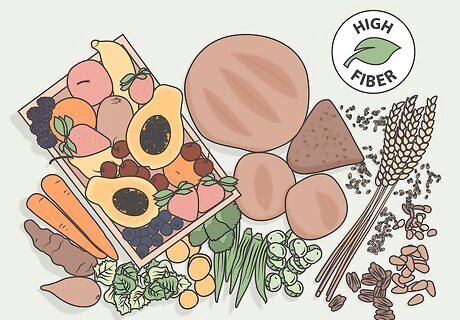
Eat plenty of fiber to clean your teeth. While fiber probably makes you think of digestion, it’s also important because it cleans between your teeth. Make sure you include high-fiber foods in your diet to help keep your mouth clean. Good high-fiber foods include fresh fruits and vegetables, nuts, seeds, and whole grain breads. Leave the skin on fruits and vegetables for extra fiber.
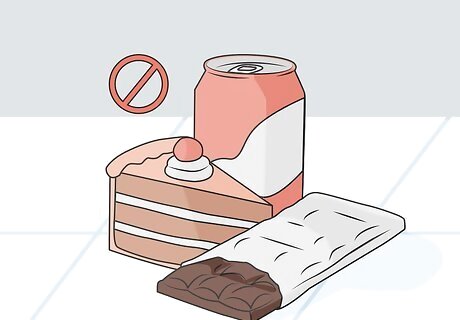
Cut sugary foods and drinks out of your diet while the decay heals. Avoiding sugar is always important, but it’s especially crucial if you have tooth decay. Try to cut out most or all of the sugary foods that you eat to heal the damage faster. In general, avoiding sugar is important for your oral health. Limit the amount of soda, desserts, and other sugary foods in your diet. If you do eat any sugary foods, have them with a meal instead of by themselves. Your saliva will clean sugar and acids off better if you’re eating other foods.
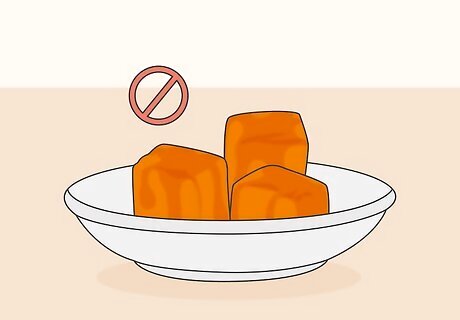
Avoid sticky foods that bind to your teeth. Even if they aren’t sugary, sticky foods are tough to clean off and can make decay worse. Try to avoid sticky candies or similar items. Dried fruits, while they’re good for you, are also sticky, so don't eat too many of these until the decay heals. If you still want some dessert, dark chocolate is best. This melts quickly and doesn’t stick to your teeth.
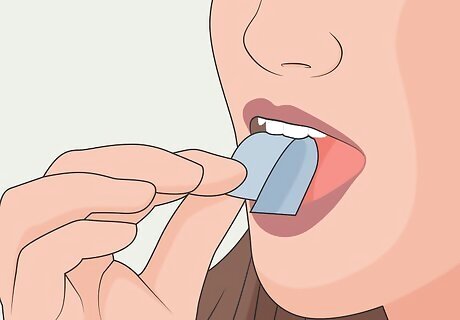
Chew sugar-free gum to keep your saliva flowing. Sugar free gums containing xylitol help clean your teeth and keep saliva flowing to neutralize acids. Don’t replace sugar-free gum with regular gum, which contains sugar. This won’t have the same effect, and gum with sugar can cause further damage by spreading acids in your mouth.



















Comments
0 comment